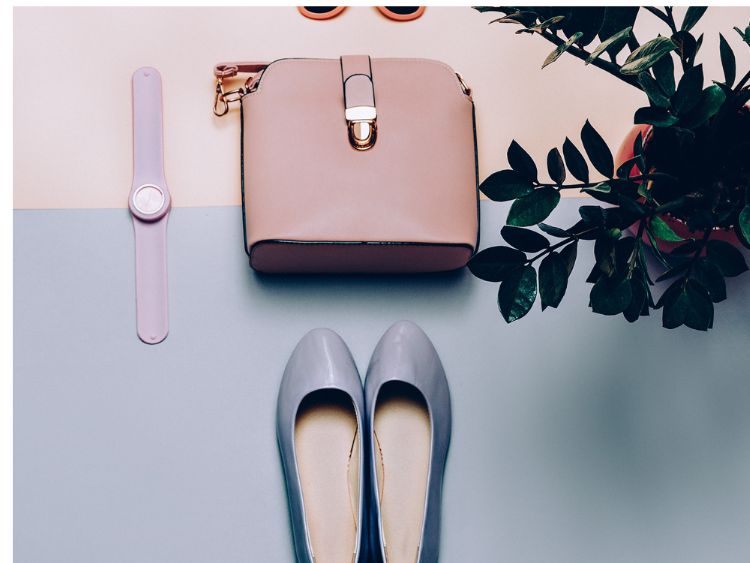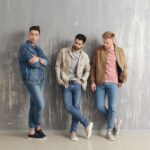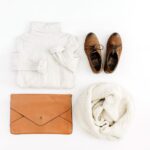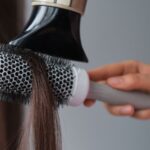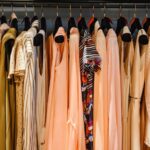The 1950s were an iconic decade for fashion, characterized by a return to femininity, formality, and elegance after the more austere styles of the 1940s. This era gave birth to timeless trends that continue to influence modern fashion today. From full skirts and tiny waists to the rise of youth culture, ‘50s fashion was all about celebrating individuality and class. In this article, we’ll explore the various styles and trends that dominated the decade and how they still inspire the fashion world today.
What Defined ‘50s Fashion?
The fashion of the 1950s is often associated with glamorous, feminine silhouettes. Designers like Christian Dior, who introduced the “New Look” in 1947, shaped the decade’s style with voluminous skirts, cinched waists, and soft shoulders. Women embraced this ultra-feminine aesthetic, and it quickly became synonymous with the elegance of the time.
On the other hand, men’s fashion focused on clean-cut, tailored looks that emphasized structure and sophistication. Whether you were dressing for work or a night out, the ‘50s was all about putting your best foot forward, literally and figuratively.
Key Characteristics of ‘50s Fashion
- Hourglass Silhouette: The hourglass figure was the epitome of beauty during this time, and clothing was designed to emphasize a woman’s curves, with fitted bodices and flared skirts.
- Bright Colors and Patterns: Unlike the drab colors of the previous decade, ‘50s fashion embraced pastels, bold prints, and bright hues.
- Accessories Galore: Hats, gloves, scarves, and pearls were essential to complete any look. These accessories added an extra touch of sophistication to an already polished outfit.
- Full Skirts and Petticoats: Voluminous skirts, often worn with petticoats for extra flair, were a major trend. The fuller, the better!
The Rise of Ready-to-Wear
One of the biggest shifts in ‘50s fashion was the emergence of ready-to-wear clothing. Prior to this, high fashion was largely limited to couture houses, and everyday folks didn’t have easy access to trendy, affordable clothing. The 1950s changed that with mass production of stylish garments that could be bought off the rack.
The availability of ready-to-wear fashion meant that more women could embrace the latest trends without breaking the bank. This democratization of fashion helped create the “uniform” of the decade: a nipped-in waist, full skirt, and delicate accessories.
Influence of Hollywood on Fashion
Hollywood played a massive role in shaping ‘50s fashion. Actresses like Marilyn Monroe, Grace Kelly, and Audrey Hepburn became style icons, and women all over the world sought to emulate their glamorous looks. Movies like Gentlemen Prefer Blondes and Roman Holiday weren’t just box office hits—they were also major influencers in the fashion world.
Movie stars often collaborated with designers, further blurring the line between fashion and film. Audrey Hepburn, for instance, was a muse to Hubert de Givenchy, who designed many of her iconic looks.
Women’s Fashion in the 1950s
Women’s fashion in the 1950s was a delightful blend of elegance and innovation. While the hourglass silhouette dominated, there were several sub-trends within this overarching theme. Let’s dive deeper into the defining styles of the decade.
The “New Look” by Christian Dior
As mentioned earlier, Dior’s “New Look” was a game-changer. With its voluminous skirts, wasp-waisted bodices, and emphasis on femininity, the New Look epitomized the glamour of the ‘50s. The silhouette was deliberately designed to make a woman’s waist look smaller while exaggerating the curves of her bust and hips. This became the gold standard for the entire decade.
Pencil Skirts and Wiggle Dresses
Not every woman wore full skirts, though. The pencil skirt offered a sleek, more figure-hugging alternative. Often paired with blouses or form-fitting sweaters, the pencil skirt was both sophisticated and subtly sexy. The wiggle dress, another ‘50s staple, featured a similar form-fitting design that accentuated curves without the flare of a full skirt.
Casual Fashion and the Rise of Denim
The ‘50s also saw the rise of more casual fashion. While formalwear remained important, especially for social events, day-to-day life called for more practical clothing. Denim jeans, once reserved for laborers, became a staple for both men and women. This shift marked the beginning of youth culture’s influence on fashion.
Popular Fabrics and Patterns
- Cotton and Wool: These natural fabrics were the most common during this era, offering comfort and structure.
- Gingham and Polka Dots: Playful patterns like gingham and polka dots became synonymous with ‘50s fashion. These prints could be found on everything from skirts to headscarves.
- Plaid: While often associated with menswear, plaid was also popular in women’s skirts and outerwear.
Men’s Fashion in the 1950s
While ‘50s fashion is often remembered for women’s ultra-feminine styles, men’s fashion also went through significant changes. Men’s suits were all about structure and clean lines, designed to emphasize a broad-shouldered, narrow-waisted figure.
The Classic Grey Flannel Suit
If there was one defining look for men in the ‘50s, it was the grey flannel suit. This became the unofficial uniform for businessmen across America. The grey flannel suit represented respectability and financial success, and it was worn with white shirts and conservative ties for a polished look.
The “Teddy Boy” Look
In contrast to the formal business attire, the “Teddy Boy” look was a rebellious style popularized by young British men. This look involved long, draped jackets, often in bold colors, paired with slim trousers and brogues. Teddy Boys were heavily influenced by rock ‘n’ roll and zoot suits from the ‘40s, combining these influences into a striking subculture style.
The Rise of Leather Jackets
Thanks to icons like James Dean and Marlon Brando, leather jackets became the epitome of “cool” in the 1950s. Whether worn on a motorcycle or just around town, the leather jacket added an edgy, rebellious vibe to any outfit.
‘50s Fashion Accessories: The Finishing Touch
No ‘50s outfit was complete without the right accessories. Whether you were going for a casual or formal look, accessories in the ‘50s were just as important as the clothing itself.
Hats and Gloves
Both men and women wore hats as an essential part of their outfits. For women, gloves were a must-have accessory, especially for formal events. White gloves, in particular, were seen as a symbol of purity and sophistication.
Statement Jewelry
Costume jewelry saw a boom during the ‘50s, with chunky necklaces, bold brooches, and oversized earrings becoming popular. Pearls, of course, were the ultimate sign of class and refinement.
Shoes of the 1950s
Women’s shoes in the ‘50s came in two main varieties: dainty and pointed heels for formal occasions and more comfortable, practical flats for daywear. Men’s shoes, on the other hand, focused on polished leather oxfords or loafers, with bold two-tone shoes making an appearance for more casual wear.
FAQs about 1950s Fashion
What were the most popular fabrics in the 1950s?
Cotton and wool were widely used, as they provided comfort and structure. Rayon was also common, particularly for women’s dresses.
Who were the major fashion icons of the 1950s?
Audrey Hepburn, Marilyn Monroe, and Grace Kelly were three of the most influential style icons of the time. Their timeless looks continue to inspire designers today.
How did men’s fashion change in the 1950s?
Men’s fashion became more structured, with a focus on clean-cut suits and polished accessories. The grey flannel suit became the go-to look for businessmen, while younger men embraced the rebellious styles of the Teddy Boy and rock ‘n’ roll cultures.
Why was the “New Look” so revolutionary?
Dior’s “New Look” was a breath of fresh air after the rationing and utilitarianism of World War II. Its emphasis on luxury and femininity set the tone for an entire decade of glamorous fashion.
Conclusion: The Lasting Influence of ‘50s Fashion
Even today, ‘50s fashion remains a source of inspiration for designers, stylists, and fashion enthusiasts. Whether it’s the hourglass silhouette, bold patterns, or polished accessories, the trends from this era continue to shape modern fashion in subtle but impactful ways. If you ever find yourself flipping through a fashion magazine or watching a red carpet event, you’re sure to spot the lasting legacy of ‘50s fashion.
Authoritative Sources:
- www.historyoffashion.com/1950s-fashion
- www.vintagefashionguild.org/1950s-fashion
- www.fashion-history.com/decade/1950s

